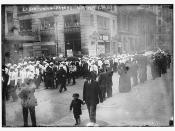Examining Annual Reports:
In order for financial analysts to make investment recommendations, there are a number of factors to be considered. A good reputation or a low stock price is not an adequate indicator of a stock's value or a company's future financial success. Through an examination of a variety of financial ratios and in-depth financial analysis, investors and analysts can gather quantifiable data to compare and contrast with other companies within a similar industry and from that information decipher how well managed a company's finances are.
We have chosen to compare two retailers based upon two key ratios and industry standards. These companies include Macy's and the May Department Stores Company. Each company is recognized as a clothing retailer. We shall examine each company's profit margin, current ratio and debt-to-equity ratio. From our analysis we hope to gather enough data that allows us to get a thorough understanding of each company's current financial position and whether or not each would be a wise investment.
Test Of Profitability: Profit Margin Ratio
Profit margin measures how efficiently the company is being managed. It tells how many cents are left over from every dollar of sales. The profit margin ratio "measures the percentage of each sales dollar, on average, that represents profit" (Libby, p. 713, 2004). Macy's profit margin for 2004 was 7.1%, the May Department Stores Company had a ratio of 5.6%. MSN's Money Central reports the industry average for the last 12 months to be 4%. Both retail companies are showing good profit margin ratios compared to industry. This means their net incomes to sales revenues are enough to generate a profit as opposed to a loss. A higher profit margin can give the companies a cushion during slower economic times.
Test of Liquidity: Current Ratio
The current ratio relates...


